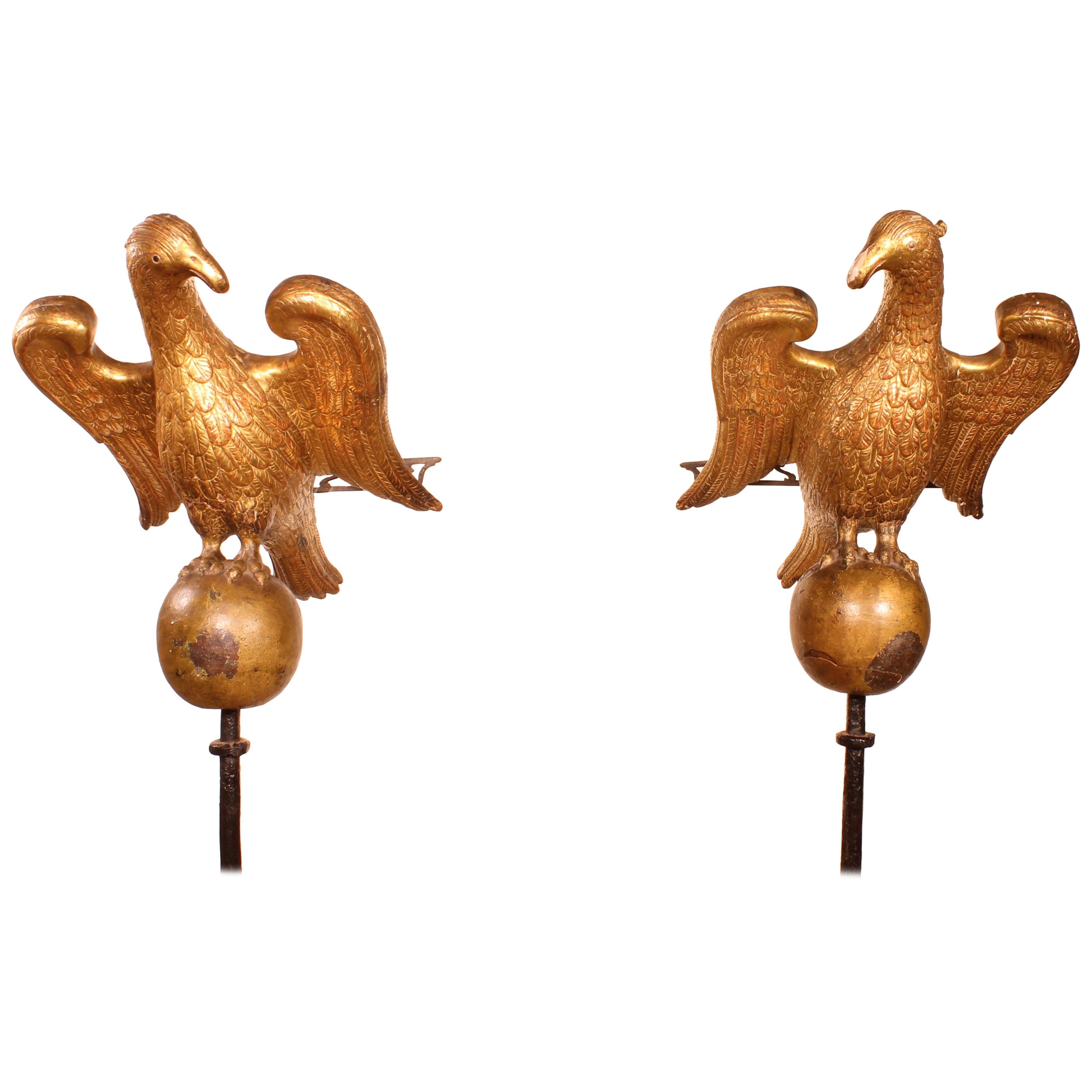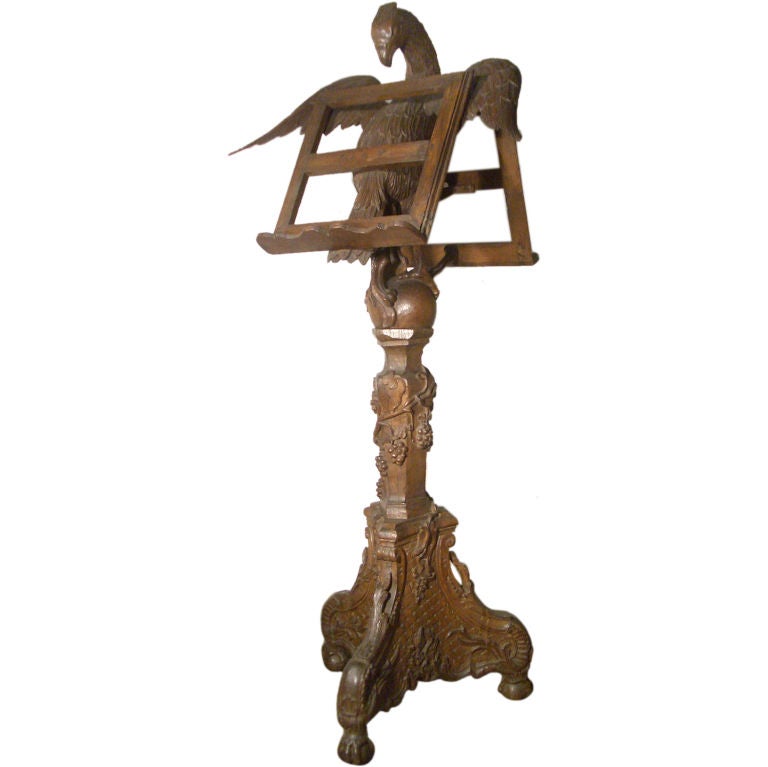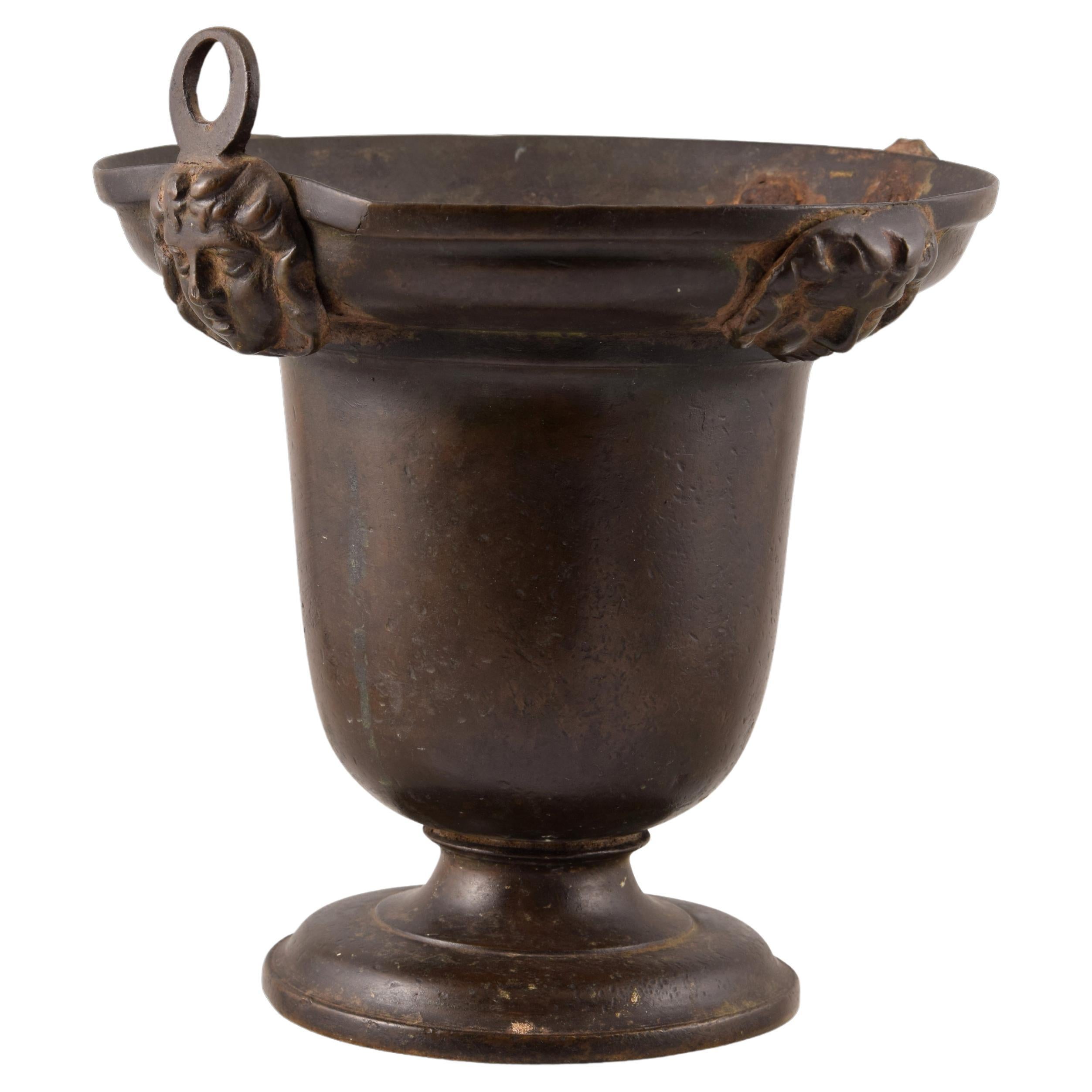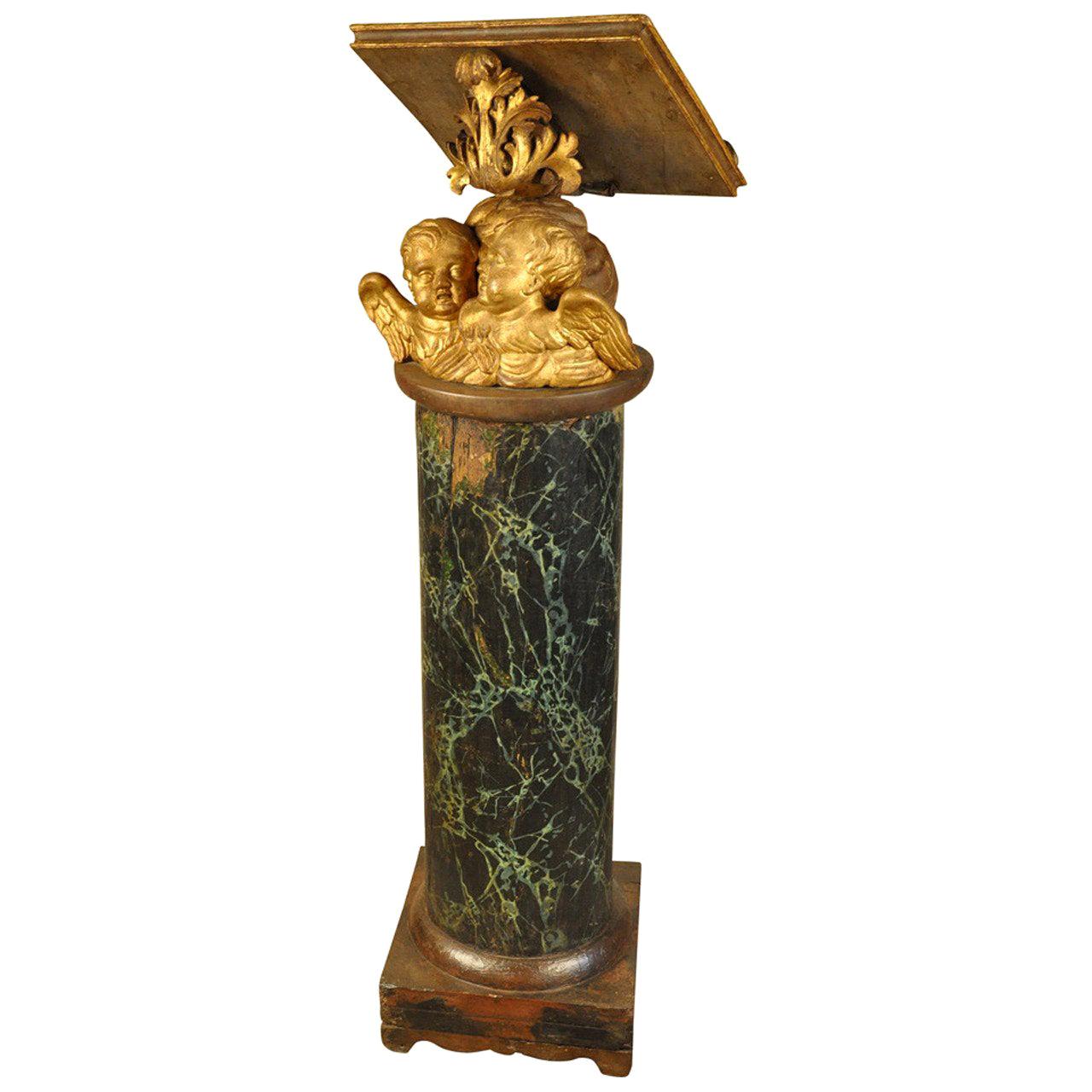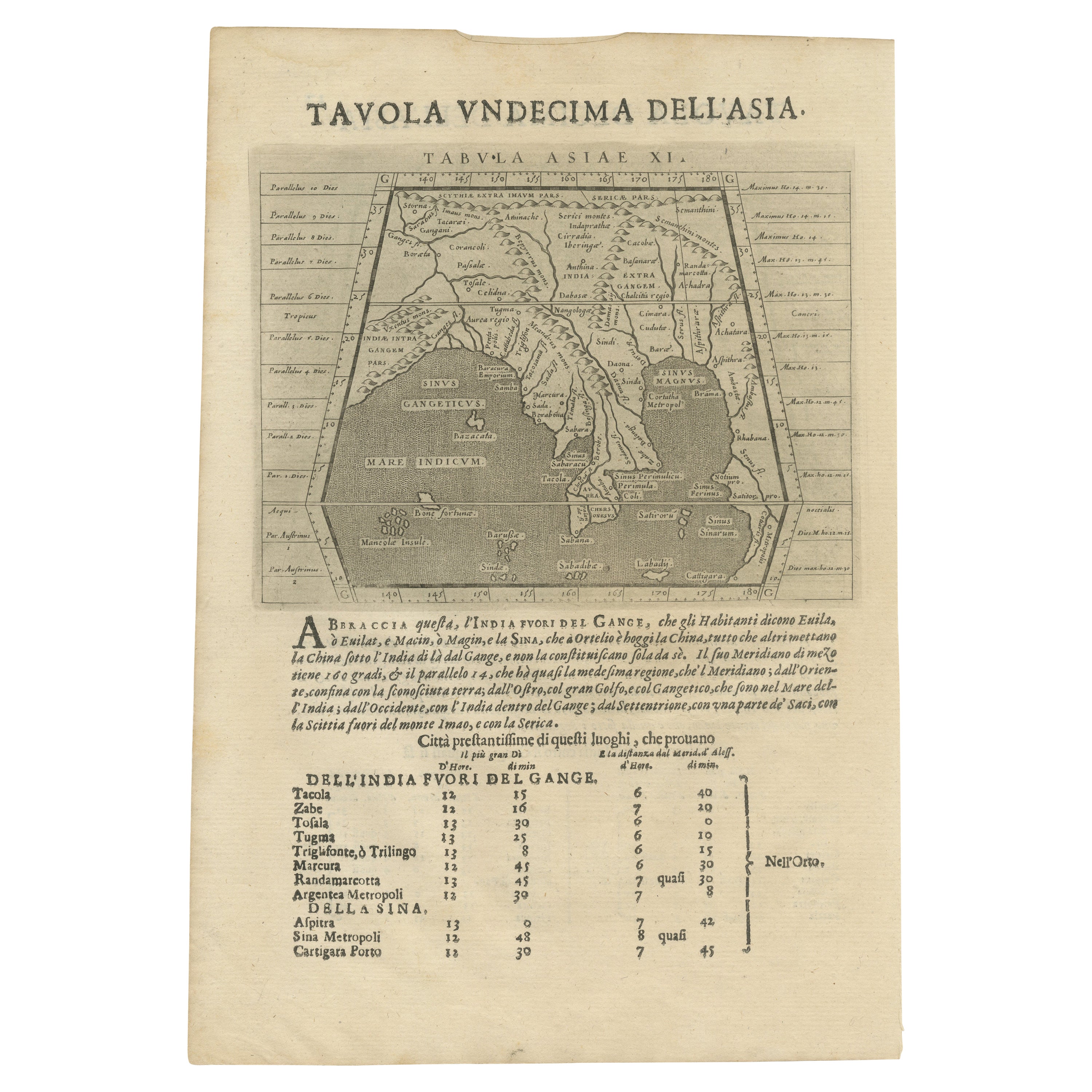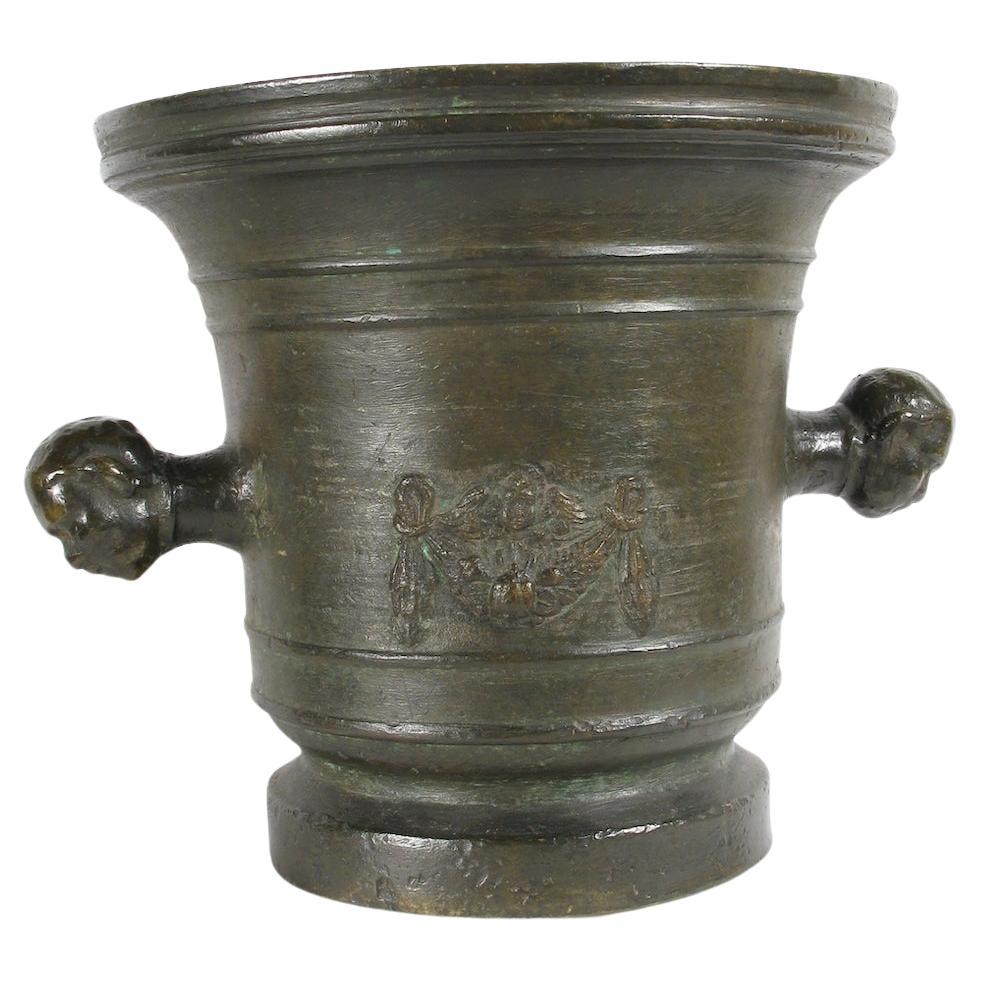Items Similar to Pair of Tall Eagle Lecterns, Bronze, Etc, 16th Century and Later
Want more images or videos?
Request additional images or videos from the seller
1 of 20
Pair of Tall Eagle Lecterns, Bronze, Etc, 16th Century and Later
About the Item
Pair of easels in the shape of an eagle. Bronze, iron. 16th-17th century.
Rear supports.
Pair of lecterns with tripod-shaped bases, claw-shaped legs with spheres, and a triangular part from which three baluster-shaped legs emerge, with elements in light tones that join at the top of this piece , leaving a vegetal form towards the lower area. The finials are two eagles on spheres, each looking to the side with its head tilted upwards, and situated with its wings half spread; the back is smooth, without the details of the feathers, eyes, beak and claws that do show in the front. The eagles could be from the Spanish school or from the Netherlands, dating from the 16th-17th centuries, while the bases are from the 20th century. It seems that, at least in Spain, the spread of tall lecterns began in the 14th century, because they were important objects for the word contained in books, on the one hand, but also and above all, as a result of their use to support the Missal in the presbytery of the churches (previously it was supported by the acolytes and since the 9th century it was placed on a cushion on the altar) in full view of all. This also entails the increase in its use in civil environments. To the existing variants, from the mid-fifteenth century is added the one that presents on its inclined plane to hold the text an eagle with outstretched wings, sometimes with a haloed head and, on occasions, with an open beak, called by the name of the animal that presents. One of these lecterns is preserved in the Cathedral of Cuenca, another in the Parish Church of Villanueva de los Infantes (Ciudad Real), some are in private collections, etc. Likewise, it is necessary to remember its frequent use in Protestant temples, with really striking Victorian-era works. It is often thought that the presence of the eagle is linked to Saint John and his Gospel, or that it refers to an allegory of the greatness and elevation of the Word, but it must be taken into account that it was also a bird identified with the sun. (it was thought that he spent his life continuously under its rays) and with the idea of masculine activity (strength, power of flight...). It is frequently mentioned in the Sacred Texts with an allegorical meaning (Divine Protection, Christian Church...) or equating the flight of the bird with divine protection and design (Exodus 19:4: You have seen what I have done to the Egyptians, and how I have taken you on eagles' wings and brought you to myself), or linking it with the Resurrection (verse 5 of Psalm CII which reads "My youth will be renewed like that of the eagle"). Remember, for example, that Beato de Liébana affirms that the eagle is the Church, and that the wings are the two Testaments, through which it flies in the sky, or that Dante refers to the bird as "of God".
Weight: 125 kg. Size: 44x50x181 cm.
- Dimensions:Height: 71.26 in (181 cm)Width: 19.69 in (50 cm)Depth: 17.33 in (44 cm)
- Sold As:Set of 2
- Style:Renaissance (In the Style Of)
- Materials and Techniques:
- Place of Origin:
- Period:
- Date of Manufacture:16th Century
- Condition:Wear consistent with age and use. Minor losses. Minor fading.
- Seller Location:Madrid, ES
- Reference Number:
About the Seller
4.9
Vetted Seller
These experienced sellers undergo a comprehensive evaluation by our team of in-house experts.
Established in 1985
1stDibs seller since 2017
292 sales on 1stDibs
Typical response time: 16 hours
- ShippingRetrieving quote...Ships From: MADRID, Spain
- Return PolicyThis item cannot be returned.
More From This SellerView All
- Bronze Situla, 16th CenturyLocated in Madrid, ESAcetre. Bronze. Century XVI. Bronze piece that has a circular foot, and a circular body, with an outwardly hollowed mouth at the top, and a decoration in relief in this last area o...Category
Antique 16th Century European Renaissance Religious Items
MaterialsBronze
- Bronze Pax or Pax Board, 16th CenturyLocated in Madrid, ESPaper holder bronze, 16th century. Bronze paper holder with a flat curved handle on the back that features a relief decoration organized in the front through an architectural composition with a classical influence usual in the Renaissance. Under the columns on the sides there are two heraldic shields (without bonnet, laces with tassels on three levels) with a Latin cross in the middle zone; the center shows a birth of Christ under a winged dome with heads of winged angels in the corners; at the top and under a semi-circular arch, the bust of Saint Dominic...Category
Antique 16th Century Spanish Renaissance Religious Items
MaterialsBronze
- Bronze Pax or Pax Board, 16th CenturyLocated in Madrid, ESPaper holder bronze. 16th century. Portapaz made of bronze with a flat handle in "that" on the back that presents a decoration in light relief framed in an architectural composition of classic taste. Under the columns of the sides two heraldic shields are presented; the center shows a Birth of Christ under a winged dome with heads of winged angels in the corners; flanked by two birds, at the top and under a semicircular arch, is the bust of Saint Dominic...Category
Antique 16th Century Spanish Renaissance Religious Items
MaterialsBronze
- Bronze Pax or Pax Board, 16th CenturyLocated in Madrid, ESPeacekeeper. Bronze. Century XVI. Bronze purse with a handle on the back in the shape of an esse in the same material and a decoration in light relief on the front that shows, unde...Category
Antique 16th Century Spanish Renaissance Religious Items
MaterialsBronze
- Pair of Reliefs, Castillian School, Spain, 16th CenturyLocated in Madrid, ESPair of reliefs; scene with carriage with skull and scene with portico from the 16th century. Gilded and polychrome wood. Castilian school, 16th centur...Category
Antique 16th Century Spanish Renaissance Religious Items
MaterialsOther
- Pax or Pax Board, Bronze, Spain, 16th CenturyLocated in Madrid, ESPaper holder bronze, 16th century. Portapaz made of bronze with an "asymmetric" handle on the back, which presents a decoration in light relief framed in an architectural compositio...Category
Antique 16th Century European Renaissance Religious Items
MaterialsBronze
You May Also Like
- Pair of Eagles 16th Century from North Italy Church LecternLocated in Brussels, BrusselsExceptional pair of aigles of the 16th century of Italy Superbe pair of wooden sculpted aigles from the Italian Renaissance. Very Fine and delicate sculpture The pair of eagles se...Category
Antique 16th Century Italian Renaissance Animal Sculptures
MaterialsGiltwood
- Early 18th century tall French Louis XV Carved Oak Eagle LecternLocated in Troy, NYMagnificent, tall floor lectern of outstanding quality, superbly carved and detailed. Double sided lectern supported by a finely detailed eagle, on carved stem and tripod base ending...Category
Antique Early 18th Century French Régence Music Stands
MaterialsOak
- 17th Century Italian Ecclesiastical LecternLocated in Atlanta, GAA stunning and exceptional 17th century ecclesiastical lectern from the north of Italy. The solid wood column has a polychromed faux marble finish a...Category
Antique 17th Century Italian Music Stands
MaterialsWood
- Late 16th Century Sheet with Copper Engravings of India, Pakistan, etc, 1598Located in Langweer, NLOne sheet with two engraved maps, one on each site, and text in Italian. Late 16th century copper engravings in great condition, considering its age. "Tavola Decima Dell'Asia" - Tabula Asiae X" Plate X (10). Pakistan, Cashmir, Bangla Desh, North-India...Category
Antique 16th Century Maps
MaterialsPaper
- Bronze mortar, Veneto, 16th centuryLocated in Brescia, ITBronze mortar, Veneto, 16th century Lost-wax cast bronze mortar with body outlined by parallel and succeeding frames delineating its circumference. On the two faces, in a central p...Category
Antique 16th Century Italian Renaissance Scientific Instruments
MaterialsBronze
- Bronze Mortar, Tuscany, Second Half of 16th CenturyLocated in Bruxelles, BEBronze mortar with garlands, flowers and putti - Tuscany , second half of 17th century. Measures: height 10 diameter : 13 cm Artisans and healers used mortars for grinding food...Category
Antique 16th Century Italian Renaissance Scientific Instruments
MaterialsBronze
